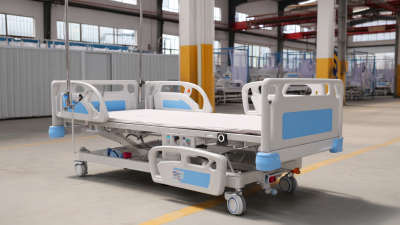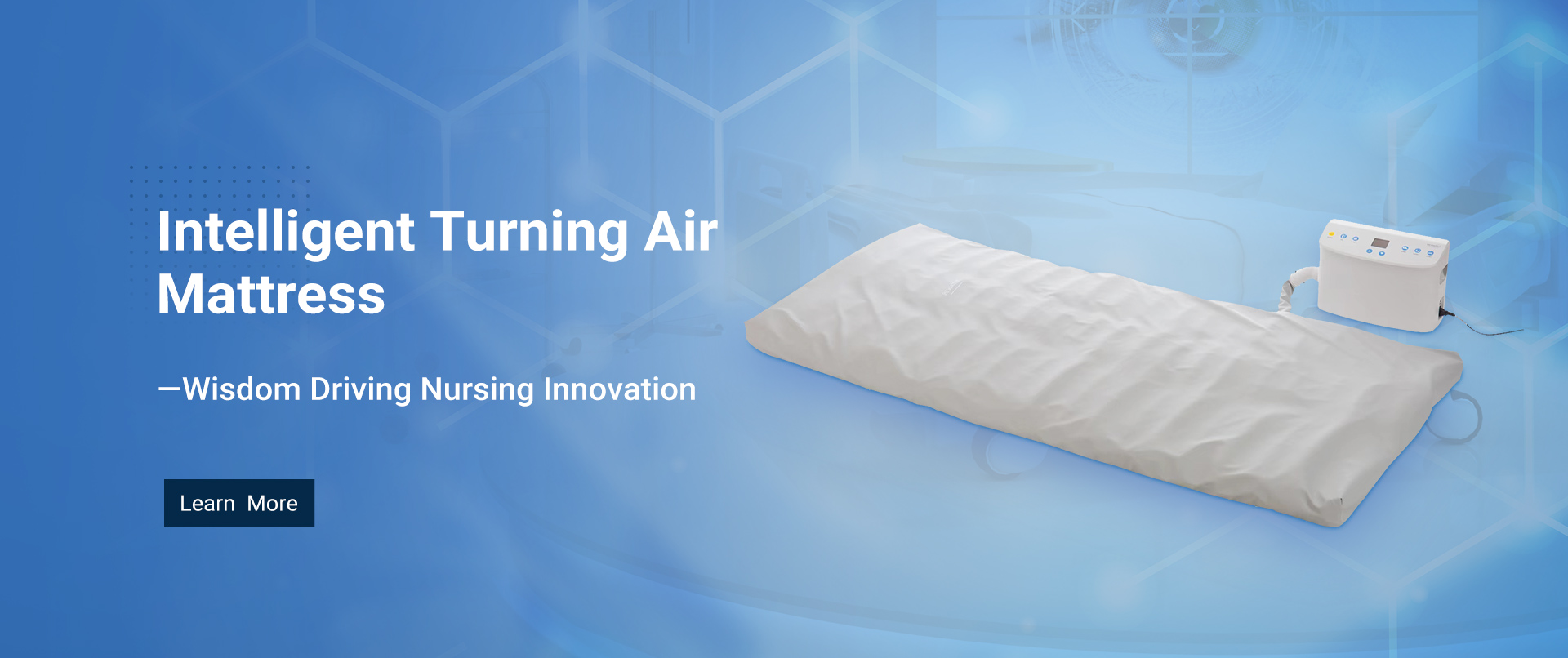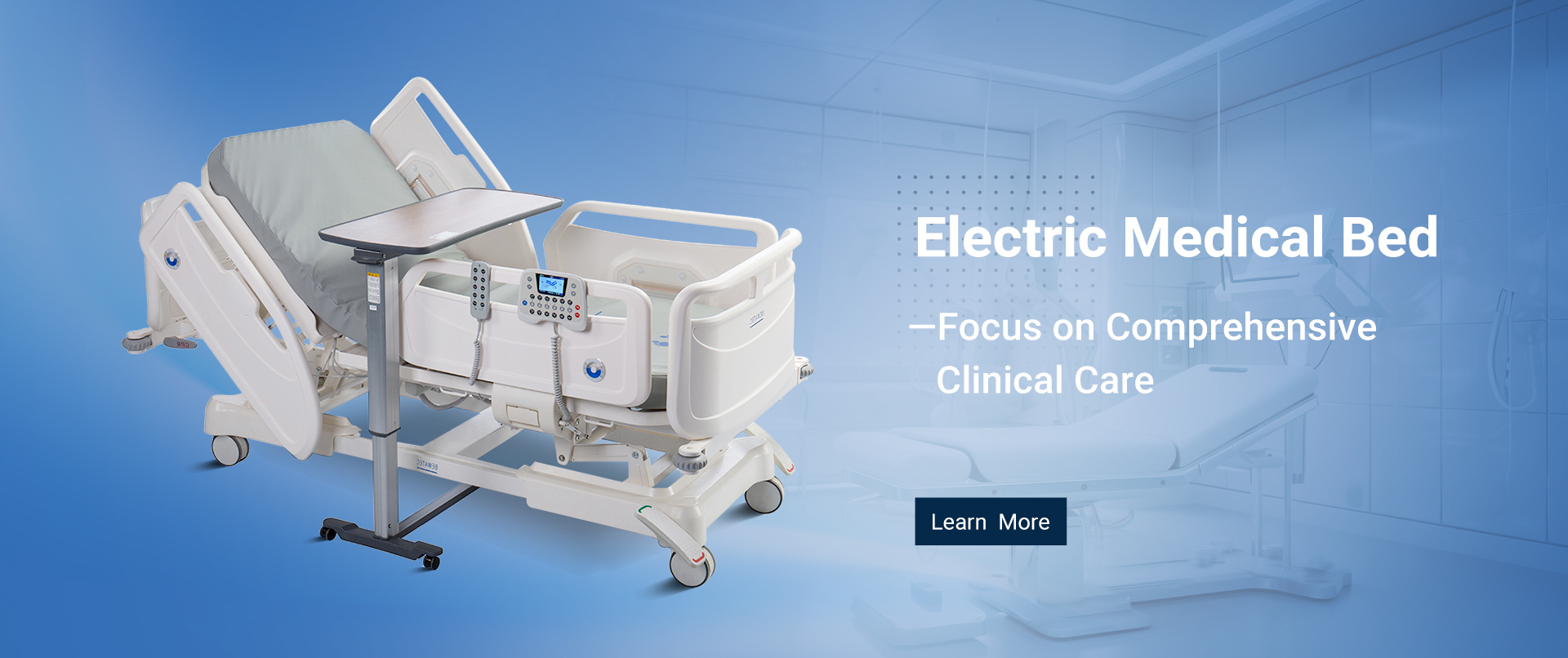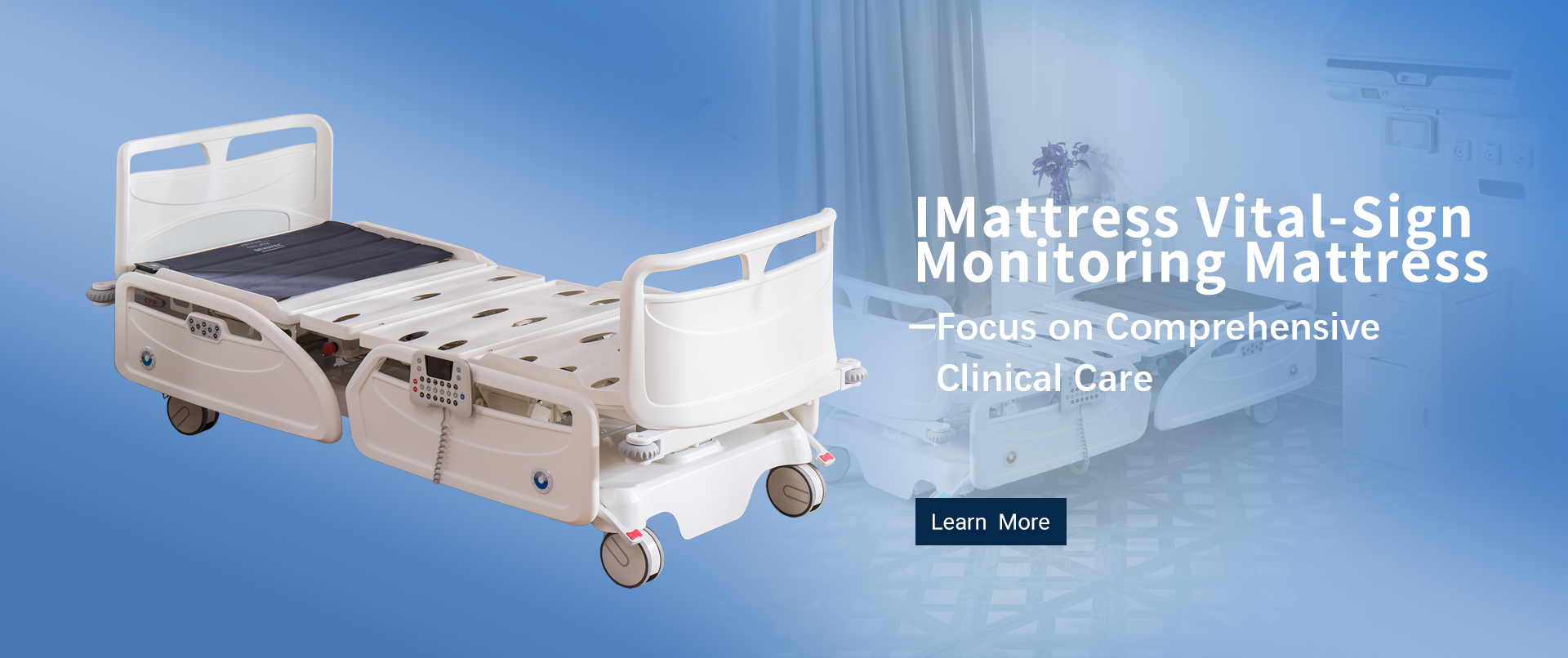
Innovative Hospital Beds Transforming Patient Comfort and Care in Modern Healthcare
Table of Contents
- Revolutionizing Patient Experience with Smart Hospital Beds
- Technology-Driven Features Enhancing Comfort and Safety
- Integrating Telehealth Solutions into Bedside Care
- Reducing Recovery Time Through Innovative Bed Designs
- Tailoring Patient Needs with Customizable Bed Options
- Utilizing Data Analytics to Improve Bed Utilization and Care Quality
- FAQS
- Conclusion
- Related Posts
These days, as healthcare continues to evolve, hospital beds are more important than ever. They’re actually central to making patients comfortable and ensuring they get the right care. I recently read that the global market for hospital beds is expected to grow around 4.5% each year from 2021 to 2028. That’s mainly because there’s more demand for smarter healthcare solutions and, unfortunately, more folks dealing with chronic illnesses.
 Companies like Bewatec (Zhejiang) Medical Device Co., Ltd. are really leading the charge here, focusing on innovative, digital-driven medical care. They’re trying to personalize patient experiences and make care safer—all with the aim of reshaping how patients feel during their hospital stays. Their drive to develop specialized solutions fits perfectly with the global push toward digital transformation in healthcare. Basically, hospital beds are now evolving to better serve both patients and healthcare professionals in more efficient, modern ways.
Companies like Bewatec (Zhejiang) Medical Device Co., Ltd. are really leading the charge here, focusing on innovative, digital-driven medical care. They’re trying to personalize patient experiences and make care safer—all with the aim of reshaping how patients feel during their hospital stays. Their drive to develop specialized solutions fits perfectly with the global push toward digital transformation in healthcare. Basically, hospital beds are now evolving to better serve both patients and healthcare professionals in more efficient, modern ways.
Revolutionizing Patient Experience with Smart Hospital Beds
You know, the way smart technology is finally making its way into hospital beds is pretty much transforming the whole patient experience. It's not just about making things more comfortable — although, that's a big part of it — but also about giving better care overall. These modern beds come packed with cool features like adjustable positions, built-in monitors, and controls for the environment that really cater to what each patient needs.
And get this: healthcare workers can adjust the bed's height and angle remotely, which means they can make patients more comfy or easier to access without having to struggle with manual adjustments. That’s a huge plus for everyone involved.
On top of that, these beds have sensors that keep track of vital signs and movements in real time. That means potential health issues can be spotted early, before things get worse. It’s kind of like having an extra set of eyes watching over patients 24/7, enabling medical staff to step in proactively. Plus, by improving communication—like alerting caregivers quickly if something’s off—these beds help respond faster, which can really make a difference. Overall, turning hospital beds into high-tech care tools is a pretty big leap forward in healthcare. It’s all about making patients more comfortable and cared for, while also making the whole process smoother and more efficient for everyone involved.
Technology-Driven Features Enhancing Comfort and Safety
Nowadays, when it comes to healthcare, the trend is really shifting towards high-tech hospital beds that do more than just give patients a place to lie down. These days, they’re packed with smart features — like customizable positions, pressure relief, and better mobility — making a real difference in how comfortable and safe patients feel. With people becoming more aware of their comfort, healthcare providers are really investing in these advanced beds, knowing how much they can help with recovery and overall satisfaction. It’s pretty clear that these high-tech solutions are playing a huge role in improving patient care.
The focus on safety with these beds kinda mirrors what we see in other industries, like cars, where comfort and safety are top priorities for consumers. Just like modern vehicles come with innovative seats and ergonomic designs to make driving both secure and pleasant, hospital beds are evolving too. They’re now equipped with infection control features and smart monitoring systems, similar to the tech in cars that keeps drivers safe. It’s pretty neat to see how technology is making healthcare safer and more comfortable, and honestly, it’s only going to get better. As things continue to progress, both patients and caregivers will have an even better experience thanks to these smarter, more comfortable solutions.
Integrating Telehealth Solutions into Bedside Care
You know, the way telehealth is being integrated into bedside care is really changing the game in hospitals.
I’ve read that around 61% of patients are actually open to using telehealth services, which is pretty telling—it shows people are becoming more comfortable with remote options.
Hospitals are even updating their beds to support these tech tools, often with built-in communication features so doctors and nurses can keep an eye on patients in real-time.
That way, they can jump in quickly if needed, which is pretty cool.
And get this—according to a study by the American Hospital Association, hospitals that rolled out telehealth approaches saw about a 30% drop in readmission rates.
A lot of this has to do with those smart hospital beds that can send vital data straight to caregivers, making monitoring much easier.
By combining these high-tech beds with telehealth, hospitals can not only boost patient comfort but also make the whole care process more efficient and effective.
Ultimately, it helps patients get better outcomes and leaves them feeling more satisfied with their care.
Reducing Recovery Time Through Innovative Bed Designs
When it comes to leveling up patient care, modern hospital beds are really making a difference—especially in speeding up recovery times. These days, new bed designs aren’t just about being comfy; they’re packed with all kinds of tech that help patients heal better. Things like adjustable positions, built-in monitors, and pressure-relief materials are pretty much standard now in many hospitals. They make it easier for patients to move around, improve blood flow, and lower the odds of developing pressure sores—all these little things that help speed up the healing process.
If you're on the hunt for the right patient bed, here are a few tips to keep in mind:
- Go for beds that can be adjusted easily, so they suit different medical situations and keep patients comfy.
- Check out beds with built-in technology that can monitor vital signs in real-time—this helps staff catch issues early and give prompt care.
- And don’t forget, a bed that’s simple enough to clean and maintain is super important for keeping everything hygienic and supporting faster recovery.
These innovations show just how much thoughtful design can make a real difference in creating a healing environment. At the end of the day, focusing on patient comfort and care helps hospitals get patients back on their feet quicker and with fewer complications. It’s all about making healthcare more effective and a bit more human, you know?
Tailoring Patient Needs with Customizable Bed Options
You know, the way hospital beds have evolved over time is pretty interesting. Nowadays, there’s a
real focus on making them customizable to suit
each patient's individual needs—stuff like adjusting comfort and support, which really makes a difference
in recovery and overall experience. I read somewhere that nearly
30% of hospital patients feel uncomfortable because
the beds or bedding just don’t cut it, and honestly, that can really hamper healing. These days, new
hospital beds come with features that let caregivers tweak height and position easily—they can set it
up for maximum comfort, easier mobility, or
whatever medical needs come up. It’s like giving the bed a personality tailored to the patient!
And it’s not just about adjustments—technology has totally stepped up the game. Some high-tech beds now have smart features, like monitoring systems and adjustable firmness, which help prevent issues like pressure ulcers—studies suggest that these innovations can cut down such problems by up to 30%. Pretty impressive, right? Plus, these techy beds help lighten the workload for healthcare staff, letting them focus more on the important stuff—like actually caring for the patients. Overall, investing in these cool new beds is really making a positive impact, not just on recovery outcomes but also on how patients feel during their stay. It’s like, healthcare is truly moving into the future, one comfy, smart bed at a time.
Utilizing Data Analytics to Improve Bed Utilization and Care Quality
These days, when it comes to healthcare, integrating data analytics into hospital bed management is really changing the game for patient care. By harnessing advanced algorithms and machine learning, hospitals can get smarter about how they use beds and improve the overall quality of care. It’s pretty amazing—these tools allow hospitals to more accurately predict when patients will be admitted or discharged, which means they can better allocate resources without running into snags. Managing how patients move through the system strategically helps reduce bottlenecks, cut down on waiting times, and makes the whole experience way more comfortable for patients.
A good tip is to look at your decision-making processes for managing bed availability—sometimes a simple review can make a big difference. And don’t forget to invest in training staff on these new analytics tools. The more comfortable everyone is with the tech, the more you’ll get out of it.
Measuring quality in healthcare is a huge deal—it really impacts how full beds get and, ultimately, patient outcomes. Moving towards value-based care encourages hospitals to do more than just cut costs; it pushes us to improve what really matters—delivering top-notch care. By constantly keeping an eye on performance metrics and using models that reflect how systems behave, hospitals can spot inefficiencies early and make smarter choices that benefit patients.
A few tips? Regularly analyze patient flow data to see what trends are emerging and what obstacles might be popping up in hospital operations. Also, foster a culture where everyone’s involved in finding ways to improve patient care—staff at every level should feel empowered to suggest better practices.
FAQS
: Modern hospital beds integrate advanced systems that allow for customizable positions, pressure relief, and improved mobility, significantly enhancing patient comfort and safety.
Just as modern vehicles are designed with innovative seating technologies for a secure and pleasant experience, hospital beds are being transformed with features like integrated infection control measures and smart monitoring systems to improve patient safety and care.
Telehealth solutions are revolutionizing bedside care by allowing healthcare professionals to monitor patients in real-time through built-in telecommunication technologies in innovative hospital beds, ensuring prompt intervention and seamless communication.
Hospitals implementing telehealth strategies have seen a 30% reduction in readmission rates, largely due to continuous monitoring capabilities provided by smart hospital beds that relay critical patient data directly to caregivers.
Innovative bed designs include adjustable positioning, built-in monitoring systems, and pressure-relieving materials, which facilitate easier patient movement, enhance circulation, and minimize the risk of pressure ulcers, crucial for accelerating recovery.
Consider beds with adjustable features for various medical needs, integrated technology for real-time vital sign monitoring, and easy-to-clean designs for maintaining a hygienic environment.
Prioritizing patient comfort is essential for improving recovery outcomes, helping healthcare providers meet the demands of today's medical landscape effectively.
Integrating advanced technologies enhances patient care delivery by improving monitoring, reducing recovery times, and promoting better healing outcomes within healthcare facilities.
Healthcare facilities are recognizing the critical role of comfort and safety in recovery, leading them to invest in high-tech hospital beds with features that enhance patient satisfaction and overall care quality.
Many healthcare facilities now include adjustable positioning, built-in monitoring systems, and pressure-relieving materials in their hospital bed designs to improve patient healing and overall comfort.
Conclusion
Hey, have you heard about the latest in hospital beds? There's this article titled 'Innovative Hospital Beds That Are Changing Patient Comfort and Care in Modern Healthcare,' and honestly, it's pretty eye-opening. It talks about how new tech is really revolutionizing what patients experience when they're in the hospital. These beds now come with smart features that make a real difference — stuff like easier safety measures and things that help improve the overall comfort. Plus, telehealth tools are now built right into the bed, so patients can connect with healthcare providers instantly without having to move around. And it doesn’t stop there — the designs are so much more personalized these days, tailored to each patient's needs, which helps them recover faster and get better care overall.
On the company side, Bewatec (Zhejiang) Medical Device Co., Ltd. is totally leading the charge. They’re really at the cutting edge of this digital shift in healthcare. Their focus is on making hospital beds that are not just comfy and safe but also customizable to each patient. It’s all about giving folks a better, more personal experience while also making healthcare delivery more efficient around the world.
Related Posts
-

Unmatched Quality of Hospital Beds from Chinas Leading Factory Trusted Worldwide
-

Future Innovations in Best Hospital Equipment Bed for 2025 and Beyond
-

Unlocking Comfort: Benefits of the Best Patient Bed for Enhanced Recovery
-

Elevating Global Healthcare: Why 'Best China Factory Wholesale Hospital Bed' Sets New Quality Standards
-

2025 Trends in Healthcare: How to Choose the Best Hospital Equipment Bed for Your Facility
-

Common Challenges Faced by Global Buyers in Sourcing Medical Beds: An In-Depth Analysis
Blog Tags:








